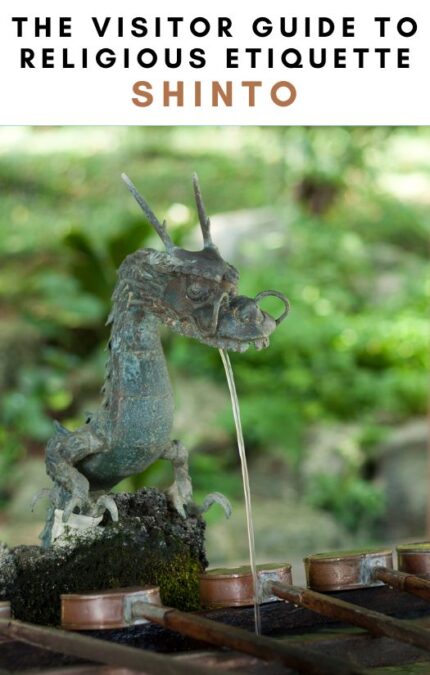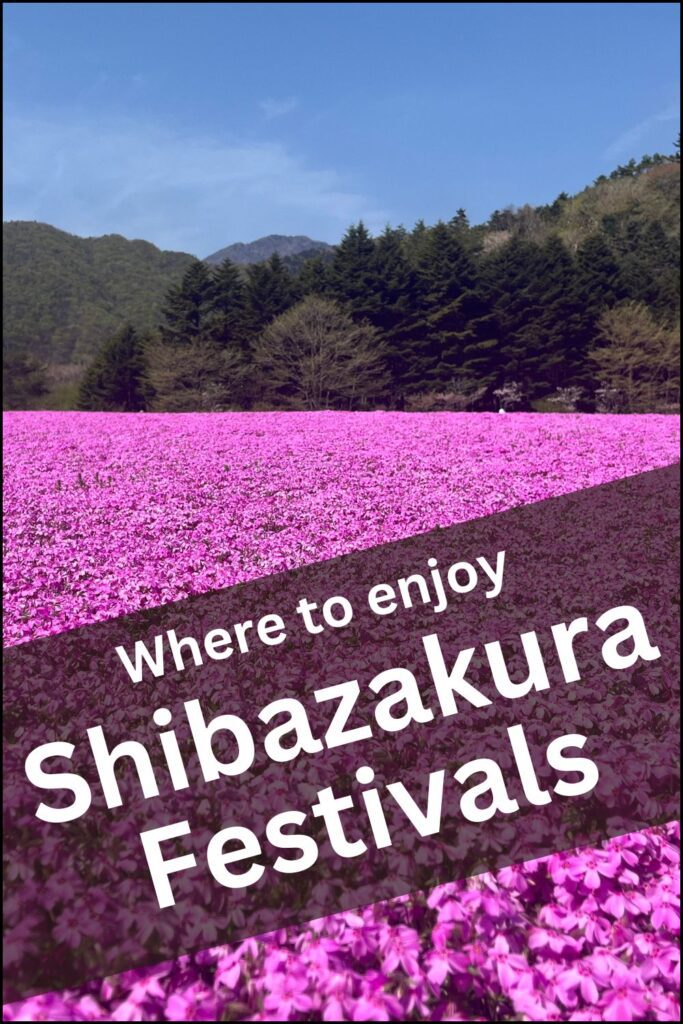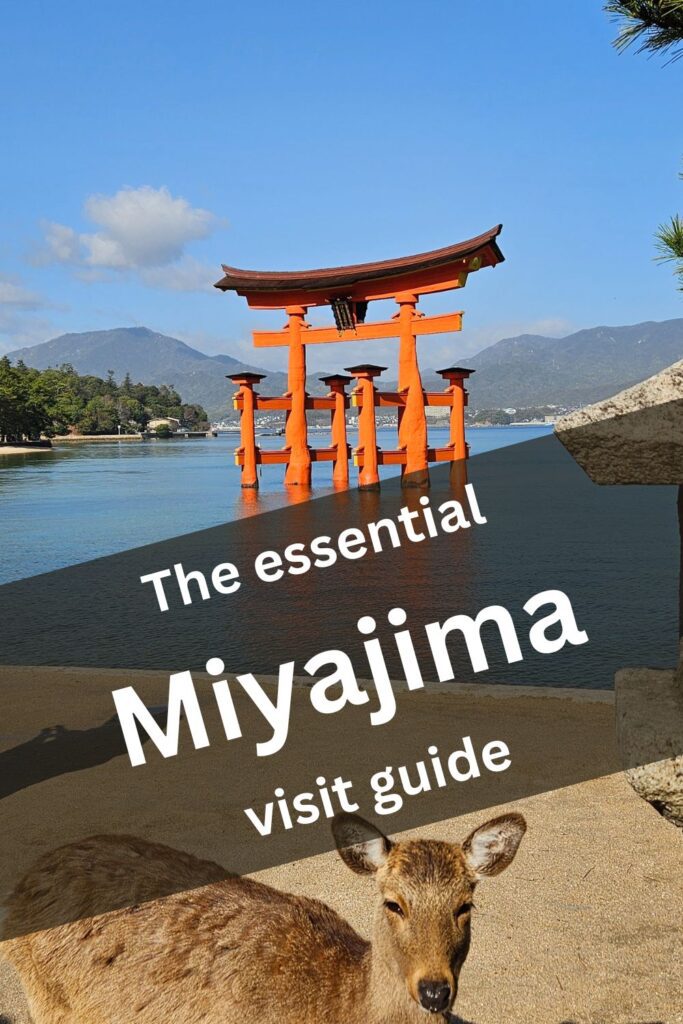- Contents
- What to expect
- Tips & Impressions
- The region
- The Shrines and Temples of Nikko
- Prices
- Opening hours
- Country Info
- Safety
- Getting around
- Flora & Fauna
- Weather
- Etiquette
- Offers
- Visit Overview
- Lake Chūzenji
- Kegon Falls
- Ryuzu Falls
- Yu Falls
- Senjogahara Marshland
- Futarasan Shrine
- Tōshō-gū Shrine
- Rinnō-ji Temple
- Closing thoughts
Nikko is an ancient city located in Tochigi Prefecture, in northern Japan. The city and surrounding parks are about two hours drive from Tokyo and are one of the most famous and beautiful tourist destinations in the country, with a history spanning over 800 years.
It is home to natural wonders, such as the beautiful and peaceful Lake Chuzenji, with its many waterfalls surrounding it, and the shrines and temples of Nikko within the city.
These shrines, temples, and pagodas are unique and extremely elaborate, with sculptors, painters, and craftsmen from all over Japan contributing to their intricate designs. In 1999, the Nikko Pagoda, Toshogu Shrine, and Rinnoji Temple, as well as Lake Chuzenji, were recognized by UNESCO as world cultural heritages.
Nikko national park is one of the most popular and visited destinations in Japan, both locally and internationally, and for good reason. The waterfalls, hiking areas within forests and mountains and the wonderful and immense shrine and temple complex, make Nikko a must-see for anyone visiting Japan.
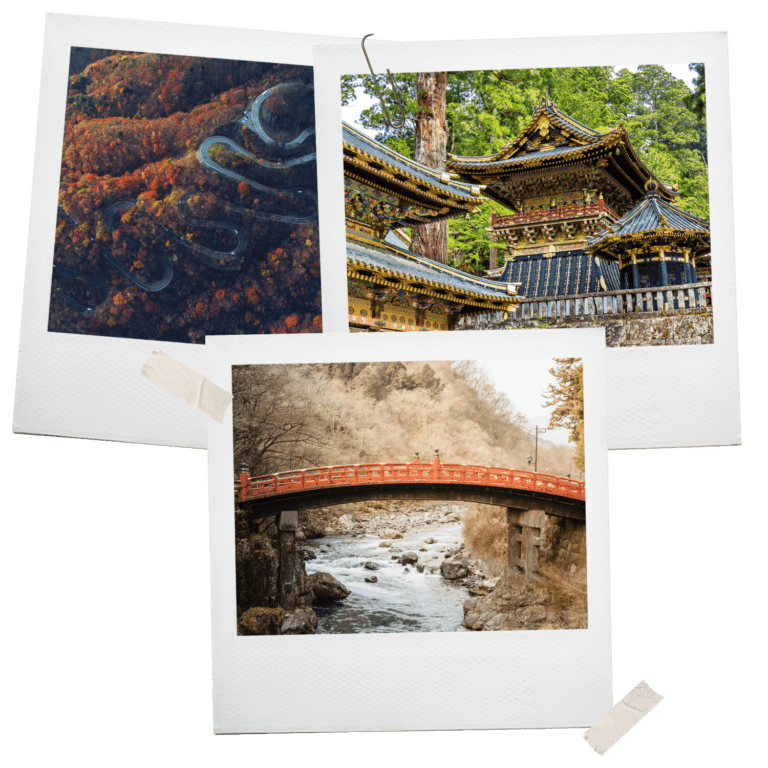
What to expect
- Beautiful scenic roads.
- The Shrines and Temples of Nikko area are a visual overload, with all the intricate carvings on the pagodas, temple pillars and shrines.
- Pristine natural reserve inhabited by small wildlife.
- Even more exaggerated restaurant policies compared to other touristic but small cities in Japan. Finding food by simply doing walk-ins into restaurants is an ordeal
- Incredible camping and hiking spots, one more inspiring than the next.
Tips & Impressions
- I visited during Japan Golden Week, a period at the beginning of May where a series of subsequent holidays make it so that many locals embark on vacations to the major sightseeing destinations, especially natural rural areas such as the lakes surrounding Mount Fuji and Nikko itself. Because of this, I experienced a quite unique, almost total unavailability of hotels and accommodations, with all booking sites indicating that 99% of properties were unavailable.
- It is hard to see Nikko without crowds. Visiting it off-season takes away a lot of its beauty, but visiting in the spring or autumn brings with it all the crowds. Which is not a big deal. Crowds mean only a lot of people in Japan, as the places are always silent, orderly, and not submerged in the chaos that one would find elsewhere when there are tons of people
The region
Nikko National Park is a large natural area within the northern part of the Kanto region. The park revolves around the sacred 2,486-meter Mt. Nantai and the the two other major mountains: Nyoho and Taro. Beneath the mountains stands Lake Chuzenji.
The wonderful natural landscape has historically inspired countless pilgrims and visitors, from Buddhist monks creating the shrines and temple complex in the 8th century to shoguns choosing the region as their burial site to foreign visitors such as Ernest Satow, who became enamored of the views during the Meiji restoration and opening of Japan to the western world.
The Shrines and Temples of Nikko
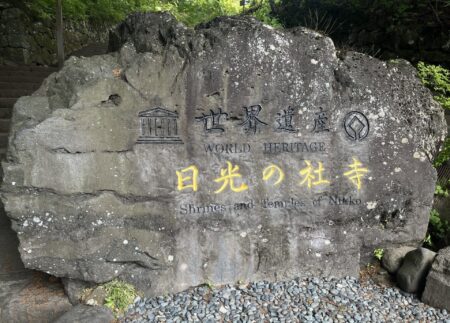
Within the town are the Shrines and Temples of Nikko, a single complex composed of one hundred-three religious buildings within two Shinto shrines (the Toshogu and the Futarasan-jinja) and one Buddhist temple (the Rinnô-ji). Most of these buildings were constructed in the 17th century and are important historically, as within Toshogu and Rinnoji are memorial mausoleums of important figures in the Tokugawa shogunate.
The shrines and temples are unique as they remain immersed within the surrounding forest and express complex architecture with very ornate and gold-plaque buildings.
The unusual character of the property is the result of a combination of very important long-standing values: the 50.8-hectare property provides evidence of a long tradition of worship, a very high level of artistic achievement, and a striking alliance between architecture and the surrounding natural setting, and it serves as a repository of national memories.
Tokugawa Ieyasu (ruling from 1603 to 1605) was the first shogun of the Tokugawa Shogunate and is credited with bringing 300 years of peace and stability to the country after a long period of regional conflict. The famed shogun’s remains are entombed at Nikko Toshogu Shrine , while nearby Futarasan-jinja Shrine and Rinnoji Temple offer similarly spectacular sights.
Prices
Toshogu: 1300 yen (shrine), 1000 yen (museum), 2100 yen (shrine and museum)
Futarasan Jinja: 300 yen
Rinnoji: 900 yen (Sanbutsudo and Taiyuin), 300 yen (Treasure House and Shoyoen Garden)
Kegon Falls observation deck: 570 yen
Opening hours
Toshogu: 9:00 to 17:00 (until 16:00 from November to March) Admission ends 30 minutes before closing
Futarasan Jinja: 8:00 to 17:00 (until 16:00 from November through March)
Rinnoji: 8:00 to 17:00 (until 16:00 from November through March), Admission closes 30 minutes before closing time.
Kegon Falls observation deck: 8:00 to 17:00 (May to November), 9:00 to 17:00 (March and April), 9:00 to 16:30 (December to February)
Country Info
- Language: Japanese
- Population: 126,702,133 (July 2016 est.)
- Political System: Parliamentary constitutional monarchy
- Ethic Groups: Japanese 98.5%, Koreans 0.5%, Chinese 0.4%, other 0.6%
- Religions: Shinto 48.6%, Buddhist 46.3%, 1% Christian, 4% other
- Currency: Japanese Yen (JPY)
- Credit Cards: Credit cards are widely accepted
- Electricity: 100 volt / 50 hertz and 100 volt / 60 hertz (NEMA 1-15, NEMA 5-15)
Check the Japan page for more country general information
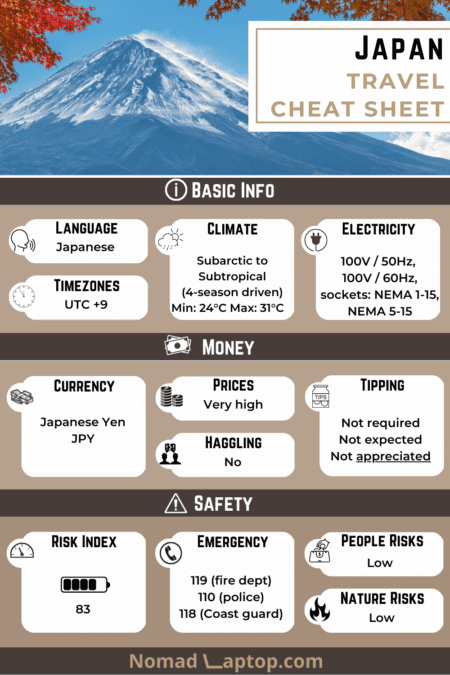
Safety
- Safety:
- As with any mountainous region, expect sudden changes in the weather.
- When it comes to wildlife, the region does not pose many risks. There are monkeys which like everywhere are unpredictable and can alternate between being frightened, friendly and aggressive.
- Emergencies number:
Getting around
- Hiking: Nikko is a popular place for hiking as it offers large expanses of marshlands, mountainous trails through the three mountains, and easier routes coasting the waterfalls and Lake Chuzenji.
- By car: Nikko is a 2h drive from Tokyo, and arguably the best way to explore the park driving on the wonderful roads winding up the mountains to Lake Chuzenji and coasting the lake side.
- By public transport: Nikko can be reached from Tokyo through the Tobu Railway or through a longer route using the Japan Railways (so eligible for the JR Pass). The shrines and temples of Nikko are all clustered together and can be easily reached by frequent buses from the Tobu Nikko Station or even by foot. Also, the rest of the park, hiking areas, and Lake Chuzenji can be reached through several buses.
Check the Driving in Japan page for more driving tips and information

Trivia pill
Beware of Golden Week in Japan between the 29th of April and May 5th. That week contains a series of four national holidays and is a time of vacation for the Japanese people, many of whom visit the most popular spots of their country.
As such there are a lot of crowds and queues can be long. Additionally, accommodation is often fully booked, and finding a place in restaurants without prior reservation can also be quite hard. Restaurants in particular are already a bit “harsh” on foreign tourists and often will not accept them for various reasons and this is especially true during Golden Week.
Flora & Fauna
It is common to see Japanese Macaques in the non-mountainous parts of Nikko. Larger wildlife include the Japanese Deer and the Asiatic Black Bear. Lake Chūzenji is also popular for fly fishing.
The general flora consists of conifers surrounding the shrines and temples, together with the arid shrubs in the marshland areas.
Weather
Nikko is a mountainous region with an elevation of 2,000 mt. Average temperatures don’t exceed 27° C, although the region does suffer from the hot and humid Japanese Summer months.
Winters are cold but not extreme with temperatures ranging from -4° C to 3° C and Autumns bring the a risk of tropical storms or typhoons.
Nikko is renowned during Fall and is a popular place for Autumn leaves watching.
Etiquette
- As with all natural environments and national parks, try to leave as little footprint as possible on the environment. This means to not take things with you, such as plants, to not feed the animals, and to respect as much as possible the natural state of the park. On top of this, in Nikko, like everywhere else in Japan, there are no trash cans on the streets so any rubbish has to be taken with you.
- Keep a safe distance from wildlife. Hunting is also illegal within the park but fishing in the lake is permitted and quite popular.
- When visiting the shrines and temples remember the general etiquette of visiting religious monuments. Also within the Buddhist temples, photography is not allowed.
Trivia pill
Hara-kiri (“cutting the belly”) was a practice of ritualistic suicide by disembowelment through the use of a short sword (tantō).
Seppuku was the additional decapitation by an assistant who through this act would give honor and was seen as an act of mercy. It was originally an act demanded by the shogun to their daimyo or from the daimyo to their samurais
Although it is a mistranslation, the term Jigai refers to the female version of hara-kiri and requires no assistance. It was used to preserve honor, was less ritualized, and with no spectators and served to preserve honor to the woman and was often done as a consequence of their husband dying by seppuku or in battle.
When the wife of a samurai got news of her husband’s death, knowing that her household would have been captured and attacked, they would often face the wall turning their backs towards the entrance where the assailants would enter, tie their knees together so to be found in a modest position after their deathly convulsions, and proceed to sever the jugular bleeding out.
Offers
Visit Overview
Lake Chūzenji
中禅寺湖 – Chūzenjiko

About
Lake Chuzenji is Japan’s highest natural lake. It was formed from the eruption of Mt. Nantai which overlooks it around 20,000 years ago. It is famous for its wonderful foliage colors during autumn. During the 19th and 20th centuries, several foreigners and embassies acquired properties on the lake because of the beautiful and peaceful landscapes and to this day these embassies can be visited offering great views of the lake. The surroundings of Lake Chuzenji have several famous and wonderful waterfalls as well as the Senjogahara marshland higher up.
Kegon Falls
華厳の滝, Kegon no taki

About
Kegon Falls is the only exit of Lake Chuzenji and is one of Japan’s 3 most beautiful waterfalls (together with Nachi Waterfall in the Wakayama prefecture and Fukuroda Waterfall in the Ibaraki prefecture).
The waterfall can be observed either from a free observation platform overlooking it or below from another platform which requires a paid entrance and is accessed through a 100 mt deep elevator. The paid platform is open from 8:00 to 17:00 (May to November), 9:00 to 17:00 (March and April), and 9:00 to 16:30 (December to February). The ticket entrance is 570 yen.
Ryuzu Falls
竜頭ノ滝, Ryūzu no Taki

About
Ryuzu Falls is another large waterfall that flows into lake into lake Chuzenji. The name means “dragon head waterfall” in Japanese as they resemble the head of a dragon.
It is especially famous during autumn because the waterfalls are flanked by trees which create a wonderful landscape with all tones of orange and red.
Entrance is free. The waterfalls are multiple and one can follow the river upstream to the observation deck, and also proceed through the trail which leads to the Senjogahara Marshlands.
Yu Falls
湯滝, Yudaki

About
One of the most impressive waterfalls and part of the “Famous 5 Waterfalls of Nikko”. The waterfall is just below Lake Yunoko and is the exit of the Yu River. It is 70mt high and can be viewed from below from the free-of-charge observation deck. There are many trails around the waterfall which lead to the surrounding forest and several ponds and small rivers.
Impressions
Both impressive and peaceful. The thing that struck me the most was actually the sign describing the waterfall and praising its “feminine qualities” which is simply a very weird way to describe these flowing cascading rivers.
Senjogahara Marshland
戦場ヶ原, Senjōgahara
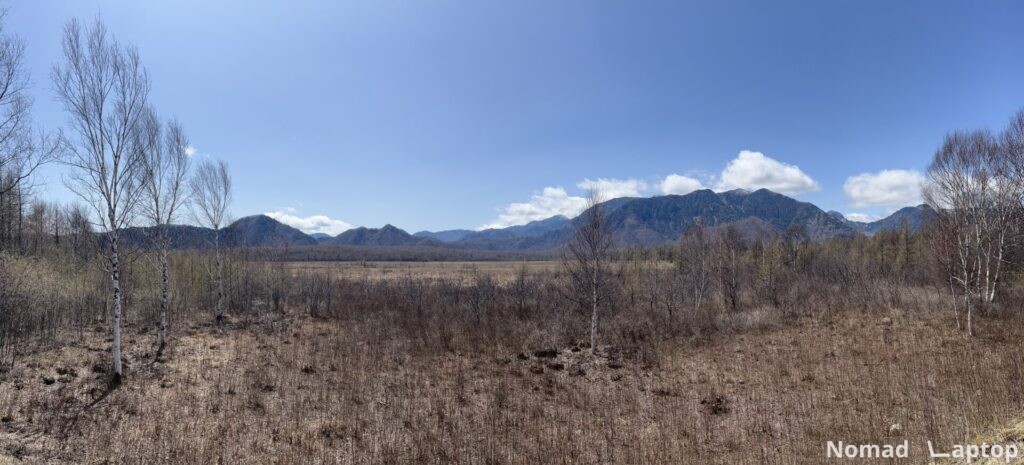
About
At an altitude of 1400mt, between Lake Chuzenji and Yumoto Onsen stands the Senjogahara Marshland, covering the plateau. Many hiking trails lead here and it is one of the most popular hiking areas in the park.
Sacred Bridge
神橋, shinkyō
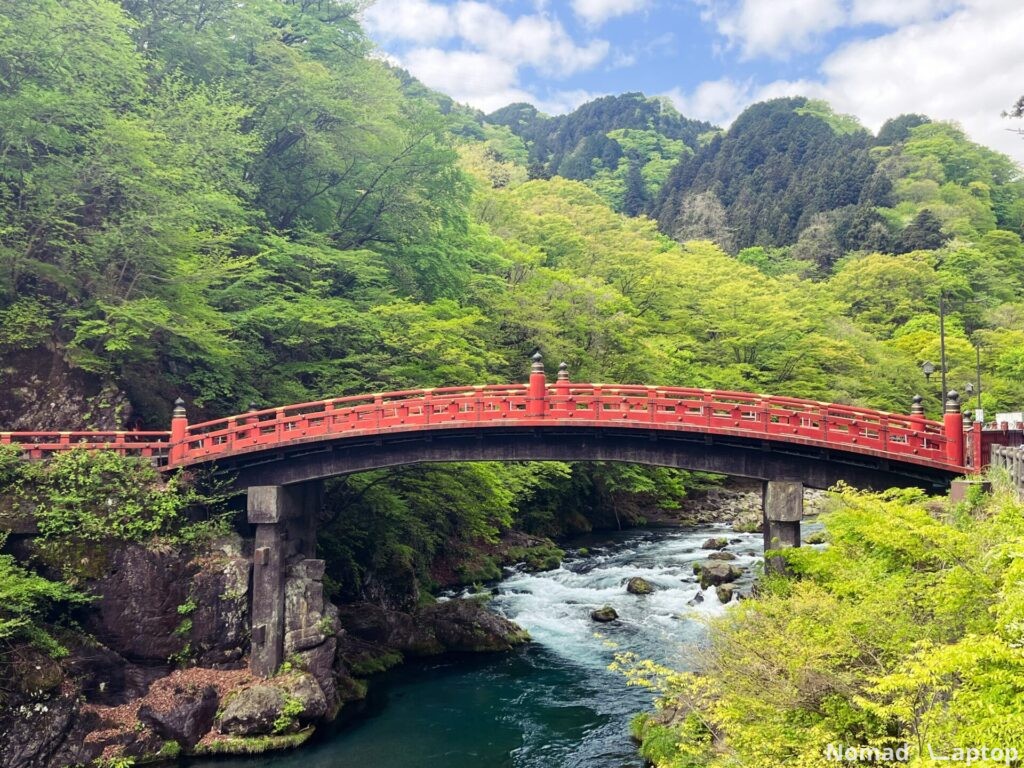
Impressions
Moving away from the higher altitude parts of the National Park and into the town of Nikko itself, the most famous sightseeing spot is the Vermillion Sacred Bridge, part of the Futarasan Shrine.
Standing at the entrance of the Shrines and Temples of Nikko, this bridge measures 28 mt in length and stands 10 mt above the Daiya River and is considered one of the 3 most beautiful bridges in Japan.
It is undoubtedly the most iconic and photographed structure in Nikko
Futarasan Shrine
二荒山神社, Futarasan Jinja

About
The first major shrine that is encountered after entering the Shrines and Temples of Nikko area is the Futarasan Shrine. It stands near the Rinnoji temple and was founded in 782 by the same Buddhist monk – Shodo Shoni.
Futarasan is an alternate name for Mount Nantai and the Shrine is dedicated to it as well as the other 2 major mountains of Nikko: Nyoho and Taro.
Most of the shrine grounds are free entry with the exception of an area next to the haiden (offering hall) which offers views of the honden (main hall) and a small garden containing old sacred trees.
Tōshō-gū Shrine
東照宮, Tōshōgū

About
Toshogu Shrine is arguably the most famous attraction in Nikko. It is a memorial to Tokugawa Ieyasu, the founder of the Tokugawa Shogunate, one of the most powerful and influential shogunates in Japanese history which ruled during the Edo period (1603 – 1868).
As per tradition, great rulers would be deified upon death, so the shrine is dedicated to Tosho Daigongen – “Great Deity of the East Shining Light”, the alternate deified name of Tokugawa Ieyasu.
The shogun’s grandson Iemitsu, also buried in the nearby Taiyuin temple, enlarged the complex into what can be seen today.
The shrine is unique in Japan as it is lavishly decorated with complex, minute details, and this is not found among other shrines where simplicity is often more sought after.
The shrine is also characteristic in its maintenance of both the Shinto and Buddhist architectures. Also, this is rare since after the Meiji restoration the two religions, which historically had been heavily intertwined, were separated and nowadays there is a clearer distinction between Buddhist temples and Shinto shrines.
There are many notable buildings in the Toshogu complex, most notably the five-story pagoda at the entrance, the storehouses, right after the entrance, with carvings of monkeys, most famous for the “see no evil, speak no evil and hear no evil” ones, and the totally not anatomically correct Sozonozo Elephants (“imagined elephants”).
Proceeding further into the shrine complex, passing through the renowned Yomeimon Gate, is the main shrine building, which as usual consists of the haiden (praying hall) connected to the honden (main hall). This is dedicated to the spirits of Ieyasu and Toyotomi Hideyoshi and Minamoto Yoritomo, two other influential daimyō and shogun.
To the right of the main shrine is the Sakashitamon Gate, with the famous carving of the Nemurineko (sleeping cat) which brings to a long set of stairs within the surrounding forest leading to the calm peaceful mausoleum of Tokugawa Ieyasu.
Rinnō-ji Temple
輪王寺, Rinnōji

About
Rinnoji is the major Buddhist in Nikko, founded in the 8th century by the Buddhist monk Shodo Shonin.
The main temple building is the Sanbutsudo which contains 3 large gold-covered statues of the Buddhist deities Amida, Senju-Kannon, and Bato-Kannon. They also symbolize the three main mountains of Nikko.
Surrounding the Sanbutsudo are the treasure house, and the Shoyoen – a wonderful Japanese garden, especially famous during autumn when the maple trees exhibit their orange and red foliage
Taiyuin Temple
Within Rinnoji is also Taiyuin temple, the mausoleum of Tokugawa Iemitsu (1604-1651), the grandson of Tokugawa Ieyasu, resting in Toshogu Temple, and third shogun of the Tokugawa family.
Despite Iemitsu being more modest and having explicitly instructed that his mausoleum not be larger than his grandfather’s, the Taiyuin temple is also a grand complex, composed of a series of beautiful gates which climb up the hill towards the main temple.
Each of these gates is a national Important Cultural Property and each one holds 2 statues of protector deities by their side. As common, one of the statues has an open mouth while the other is closed, symbolizing the “a” and “n” letters, meaning beginning and end and akin to the alpha and omega in the western traditions.
Closing thoughts
It is no surprise that Nikko National Park is one of the most popular and visited destinations in Japan, both for locals and international tourists. The region is immersed in lush nature, with the wonderful lake Chuzenji and the many waterfalls surrounding it.
Being only 2 hours away from Tokyo, it is the perfect place to escape the hustle and bustle of the large metropolis.

